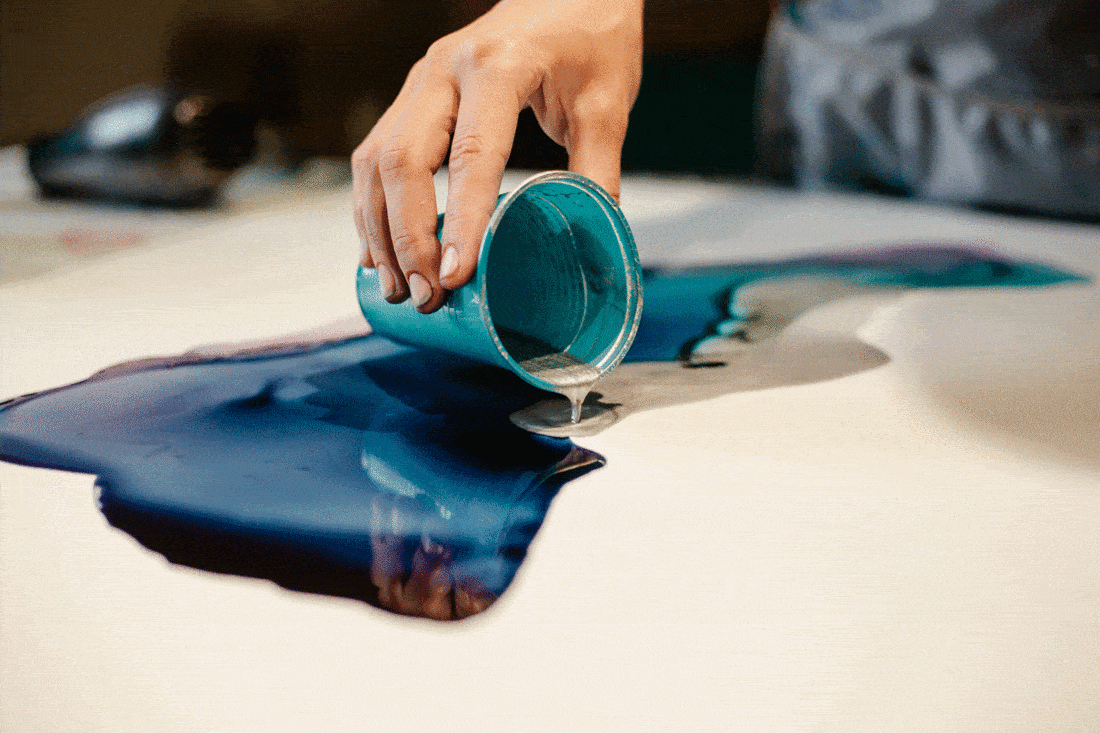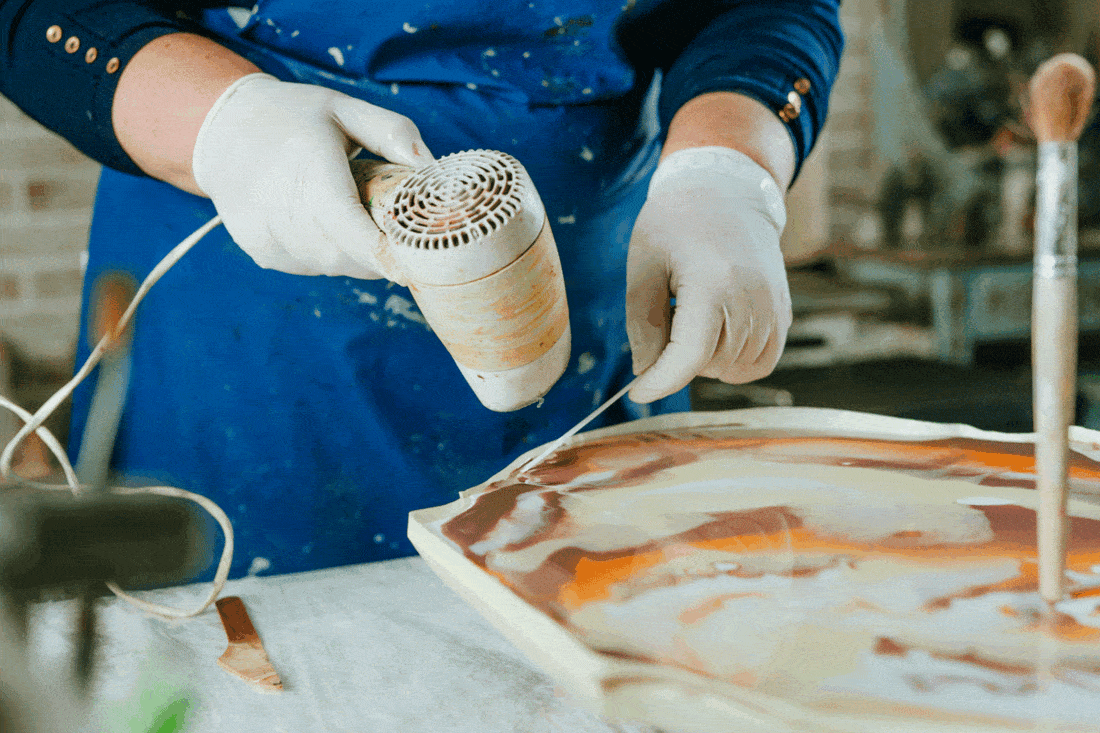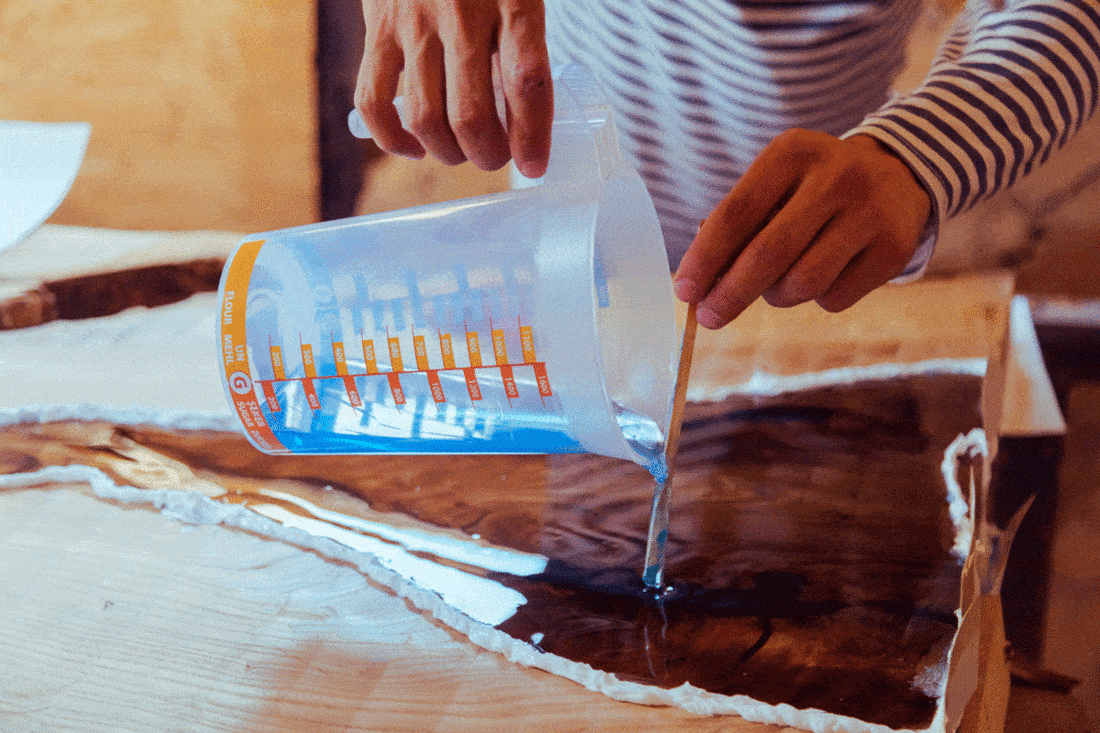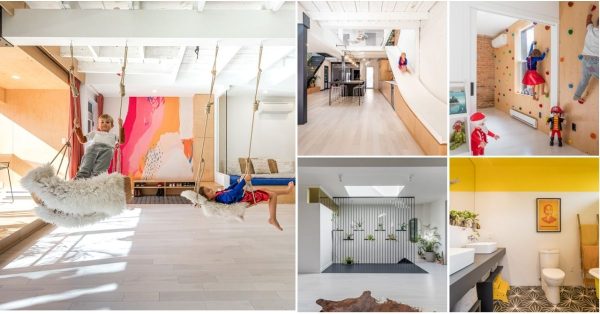Epoxy is known for its excellent bonding properties and can be used to bond a wide variety of materials, including metals, plastics, wood, and ceramics. You might wonder if epoxy will stick to melamine. Don't worry—we've researched this question and have the answer.
Epoxy cannot stick to melamine because of its surface. Melamine is a type of plastic that has a smooth, non-porous surface, which can make it difficult for epoxy to adhere properly.
Although epoxy is widely used as a coating or filler, providing a durable and protective layer on different types of surfaces, you should pair epoxy with the right surfaces. Continue reading to learn more.

Does Epoxy Stick To Melamine?
Epoxy is a versatile and widely used material that provides strong and durable bonds for a wide range of applications. It can also be used as a coating or filler, providing a durable and protective layer on surfaces. It is resistant to water, chemicals, and heat, making it suitable for use in harsh environments.

We may include affiliate links and curated AI content to highlight top design styles.
Epoxy will bond with numerous surfaces such as wood, metal, and stone. However, there are also surfaces that epoxy tends to not adhere to, and one of them is melamine.
Melamine is a type of thermoset plastic with a smooth and non-porous surface, which makes it challenging for epoxy to adhere effectively.
How To Make Epoxy Adhere
The strength of the epoxy bond can depend on several factors, such as the type of epoxy used and if the preparation is executed properly. To improve the adhesion of epoxy, you should lightly sand the surface you're applying it to so the epoxy can have something to grip.


Check out this sandpaper on Amazon.
Here are the steps you can follow to make epoxy adhere a surface. Be sure to wear gloves while you're working.
Materials to prepare:
- Epoxy resin
- Clean cloth
- 220 grit sandpaper
- Primer
- Brush
- Gloves
- Putty


- Clean and dry the surface. Make sure it's free of dust, debris, and any other contaminants.
- Sand the surface to create a rough surface for the epoxy to adhere to. Use 220 fine-grit sandpaper to lightly buff the surface.
- Apply putty. This will help smooth the surface and prep it for the next step.
- After the putty has dried, apply a primer. This will help the epoxy adhere better to the surface. Follow the manufacturer's instructions for application and drying time.
- Prepare the epoxy. Mix the two-part epoxy according to the manufacturer's instructions. Be sure to mix it thoroughly.
- After the primer has dried, apply the epoxy with a brush or spatula. Be sure to apply it evenly and cover the entire surface.
- Allow the epoxy to dry completely. This may take several hours or overnight.


Check out this primer on Amazon.
For more details, check out this video:
How To Speed Up Epoxy Curing Time

It is important to note that curing time can vary depending on the specific epoxy resin being used and the environmental conditions. Always follow the manufacturer's instructions and guidelines for the proper curing of the epoxy resin. Here are some tips on how to cure epoxy resin faster:
Increase the temperature
Epoxy resins typically cure faster at higher temperatures. You can use a heat lamp or heat gun to gently warm the surface of the resin or place the project in a warm, dry location to accelerate the curing process. However, be sure to follow the manufacturer's recommended temperature range and avoid overheating the resin.
Choose a faster-curing epoxy resin
Some types of epoxy resins cure more quickly than others. Consider using a fast-curing epoxy resin if you need the resin to cure faster. However, keep in mind that faster-curing resins may have a shorter working time and may require more careful mixing and application.
Use a hardener
Epoxy resins typically require the use of a hardener to cure properly. Using a hardener with a shorter curing time can help accelerate the curing process. Be sure to carefully measure and mix the resin and hardener according to the manufacturer's instructions.
Apply thin layers
Thicker layers of epoxy can take longer to cure. Applying it in thin layers will help it cure more quickly.
Avoid adding too much color
When adding pigment, make sure it makes up no more than 3% by volume or 10% by weight of your epoxy mixture for it to effectively cure. Adding too much pigment or a pigment not specifically made for epoxy resin can result in a failed project.
Why Isn't My Epoxy Hardening?

If your epoxy is sticky after drying, it is important to identify the underlying cause and address it immediately. You may need to remove the uncured or sticky epoxy and start again if it cannot be salvaged. Here are some of the possible reasons on why your epoxy is still sticky and not curing even after the drying time.
Incorrect mixing ratio
Epoxy resins require precise mixing of the resin and hardener in the correct ratios for proper curing. If the mixing ratio is incorrect, the epoxy may not cure properly, resulting in a sticky or tacky surface.
Incomplete mixing
Epoxy resins need to be mixed thoroughly to ensure that the resin and hardener are properly combined. If the mixing is incomplete, some areas of the epoxy may not cure properly, resulting in a sticky or tacky surface.
Humidity
High humidity can also slow down the curing process of epoxy resins, resulting in a longer curing time or a tacky surface.
Cold temperature
Epoxy resins usually cure at a slower rate at colder temperatures. If the ambient temperature is too cold, the epoxy may not cure properly, resulting in a sticky or tacky surface.
Thick application
Applying epoxy in thick layers can also result in a sticky or tacky surface. Epoxy resins usually have a maximum thickness for a single layer. If the epoxy is applied too thickly, it may not cure properly.
How Long Does Epoxy Take To Harden?

The curing time of epoxy depends on various factors such as the specific brand and type of epoxy, the temperature and humidity of the environment, and the thickness of the application.
In general, most epoxy products are dry to the touch in 24 hours and will take 72 hours to harden and become tack-free. However, it may take the epoxy seven days to fully cure and reach its maximum strength.
It is important to follow the manufacturer's instructions regarding the recommended curing time for your specific epoxy product.
Is Epoxy Waterproof?
Yes, epoxy is waterproof when it has fully cured. Once the epoxy resin and hardener have mixed and cured, they create a strong, durable, and water-resistant surface.
Epoxy is commonly used in applications where waterproofing is essential, such as in marine environments or wet areas like bathrooms and kitchens. It is also frequently used to seal and protect concrete floors, countertops, and other surfaces.
However, it's important to note that while epoxy is water-resistant, it may not be completely immune to water for the long term. Prolonged exposure to water and moisture can eventually cause the epoxy to break down or deteriorate, especially if it has not been applied correctly or if it is exposed to high levels of heat or UV light.
Final Thoughts

Epoxy is commonly used in construction, woodworking, automotive, and marine industries for bonding, filling, coating, and sealing and is also used for creating artistic pieces and decorative objects. When using epoxy, it is important to follow the manufacturer's instructions carefully for a better result.
Overall, epoxy is a versatile and durable adhesive material that can be used for a wide range of applications, and with proper use and care, it can provide long-lasting and reliable results. We hope that this article has provided you with the answers that you need!
Want to read more? Check out the related articles below!



